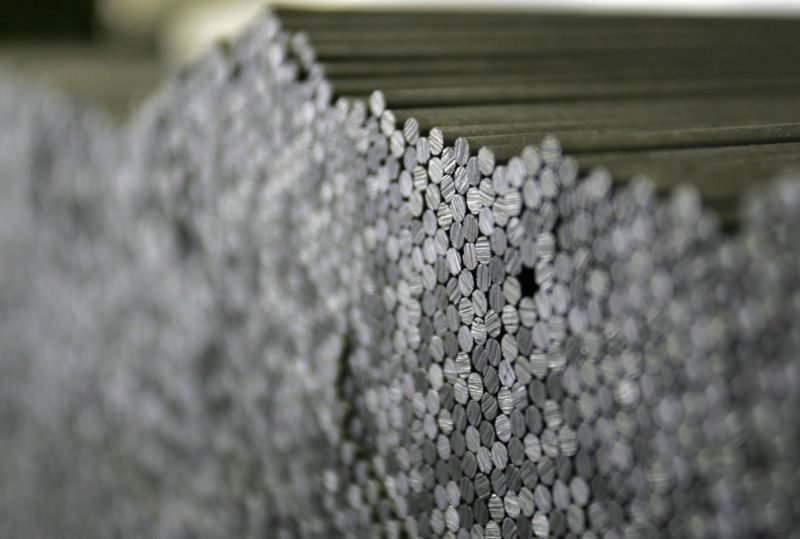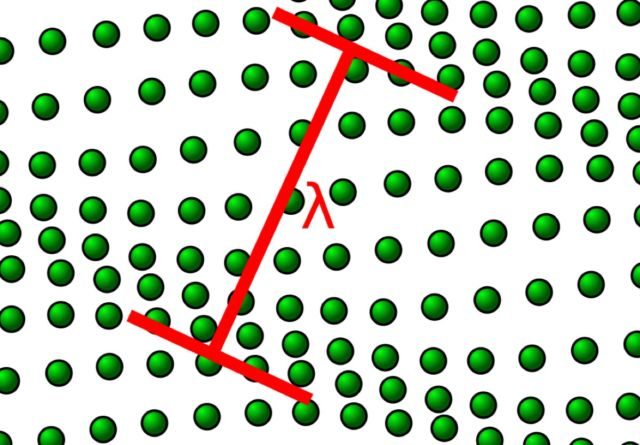
Chances are you've never heard of the concept of "second sound," even though the phenomenon has been known for decades. "It's been confined to only a handful of materials that are really very low temperature," said co-author Keith Nelson, severely limiting its potential usefulness. There might be a paragraph or two on the topic in your average solid-state textbook, but the field "has been kind of a backwater."
With the results of this new research, that may be about to change. Graphite is a very common material, and the effect was observed at a relatively balmy (by low-temperature physics standards) temperature of around -240 degrees F. The team's theoretical models indicate it might be possible to produce the effect in graphene at something closer to room temperature in the future, thereby opening up any number of potential practical applications. For instance, microelectronics just keep getting smaller, making heat management a daunting challenge. If room-temperature graphene could rapidly carry off heat as waves, it might allow even more miniaturization.
So, what exactly are we talking about when discussing "second sound"? Technically, it's an exotic mode of heat transport. Normally, "heat doesn't just travel like a bullet in a straight direction," said Nelson. Rather, it's transported through the air by molecules moving around, constantly colliding with each other and scattering in all directions as it diffuses outward.
Sound, or acoustic waves, can carry heat energy through a solid via packets of vibrational energy known as "phonons." Sound waves typically have long wavelengths, capable of traveling long distances, but the heat-carrying phonons in a solid have very short wavelengths, on the nanometer scale. The lattice structure of such solids serves as a diffraction grating, so you get the same kind of backscattering and gradual diffusion of heat radiating outward from the source as you do with heat transport in air.
"Normally, if you put heat somewhere, it will cool and spread around, but where you put it [the source] is always the warmest place," said Nelson. "That's because all these acoustic wavelets that are carrying the heat around are also constantly getting scattered back toward the origin, so it remains warm. That's what isn't happening when there is second sound."
Instead, the backscattering is suppressed and you get an unusual effect whereby the heat source actually cools faster than the surrounding region nearby-almost instantly, in fact. That's because the phonons are conserving momentum and carrying away heat en masse as a wave. "It's counterintuitive to our experience and our intuition," said Nelson. "I mean, waves do that all the time, but heat isn't supposed to move like a wave."

Huberman mentioned the results to Ryan Duncan, who works with Nelson, and Duncan dropped everything to test those predictions with a technique called transient thermal grating. First, he deposited heat into the graphite sample using two crossed laser beams, creating an interference pattern-alternating light (crests) and dark (troughs) lines. Heat has been absorbed in the light regions, while the dark bands remain cool. To make a measurement, he bounced another laser beam off that interference pattern.
Normally, that pattern would slowly diminish as the heat dissipated, with the crests gradually cooling down to the same temperature as the troughs. But Duncan found that the initially warmed regions cooled so rapidly, they became much cooler than the troughs, essentially inverting the ripple pattern.
"I had to sit down"
That's a telltale signature of second sound. "When I saw this, I had to sit down for five minutes," Duncan said, assuming something so wildly contrary to our everyday experience couldn't be real. Heat simply doesn't flow from cooler regions into warmer ones. "But I ran the experiment overnight to see if it happened again, and it proved to be very reproducible."
The next step is to try to measure second sound in a sample of graphene, where it might be even more pronounced-a much more daunting challenge since they can't use the same technique they used for graphite. "If you were to look at the surface of the graphite from the side, you'd see that the warmed regions are a bit raised up," said Nelson. "There's a ripple pattern on the surface because they've [thermally] expanded. But the unheated regions have not expanded, and that acts like a diffraction grating for our probe light."
Graphene, however, would not produce a raised interference pattern like that, given its two-dimensional nature. "If you have just one layer of atoms, then there's nothing to expand, since in thermal expansion, it's the distance between the atoms that's increasing," said Nelson.
DOI: Science, 2019. 10.1126/science.aav3548 (About DOIs).



Comment: More news on the science and power of waves: